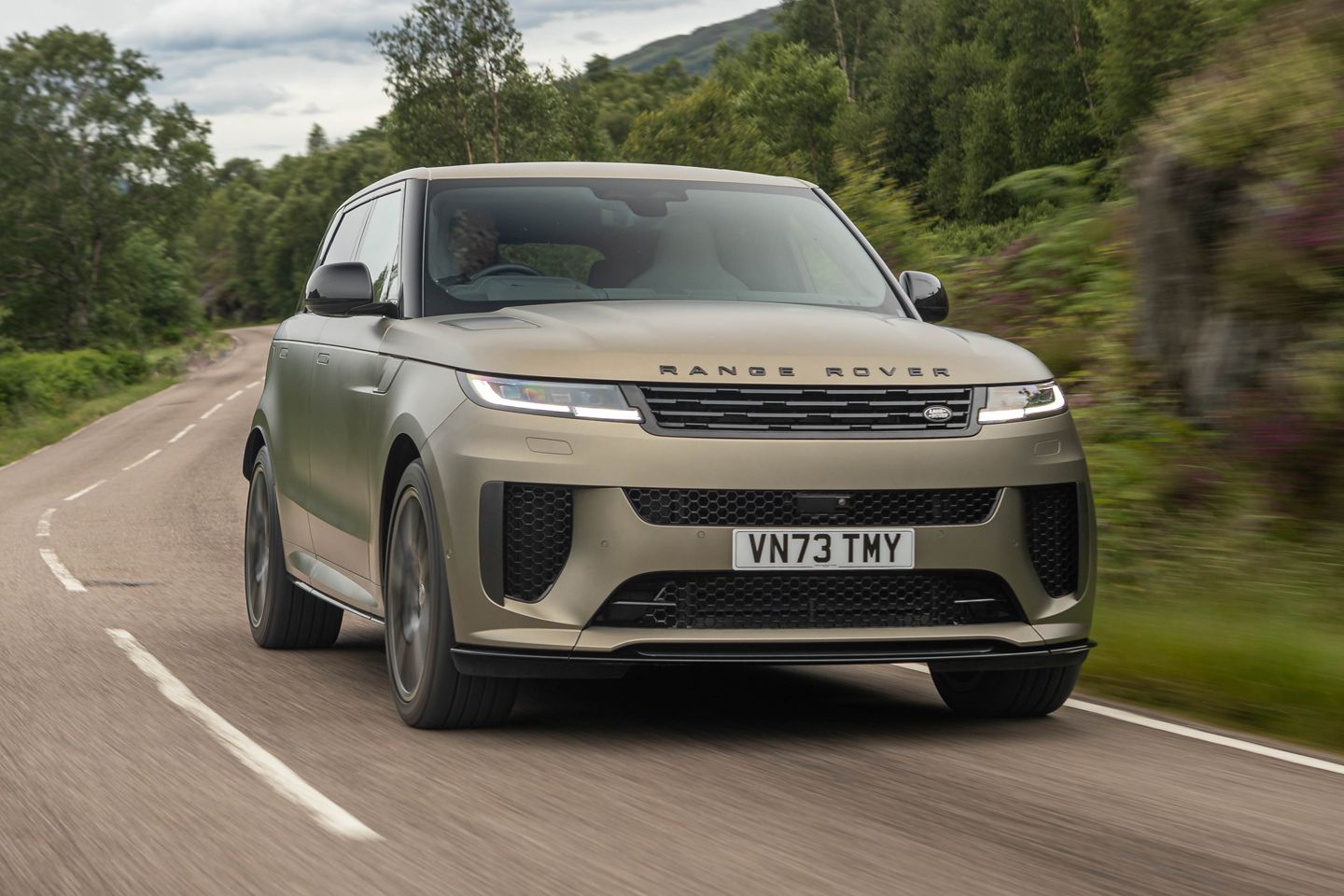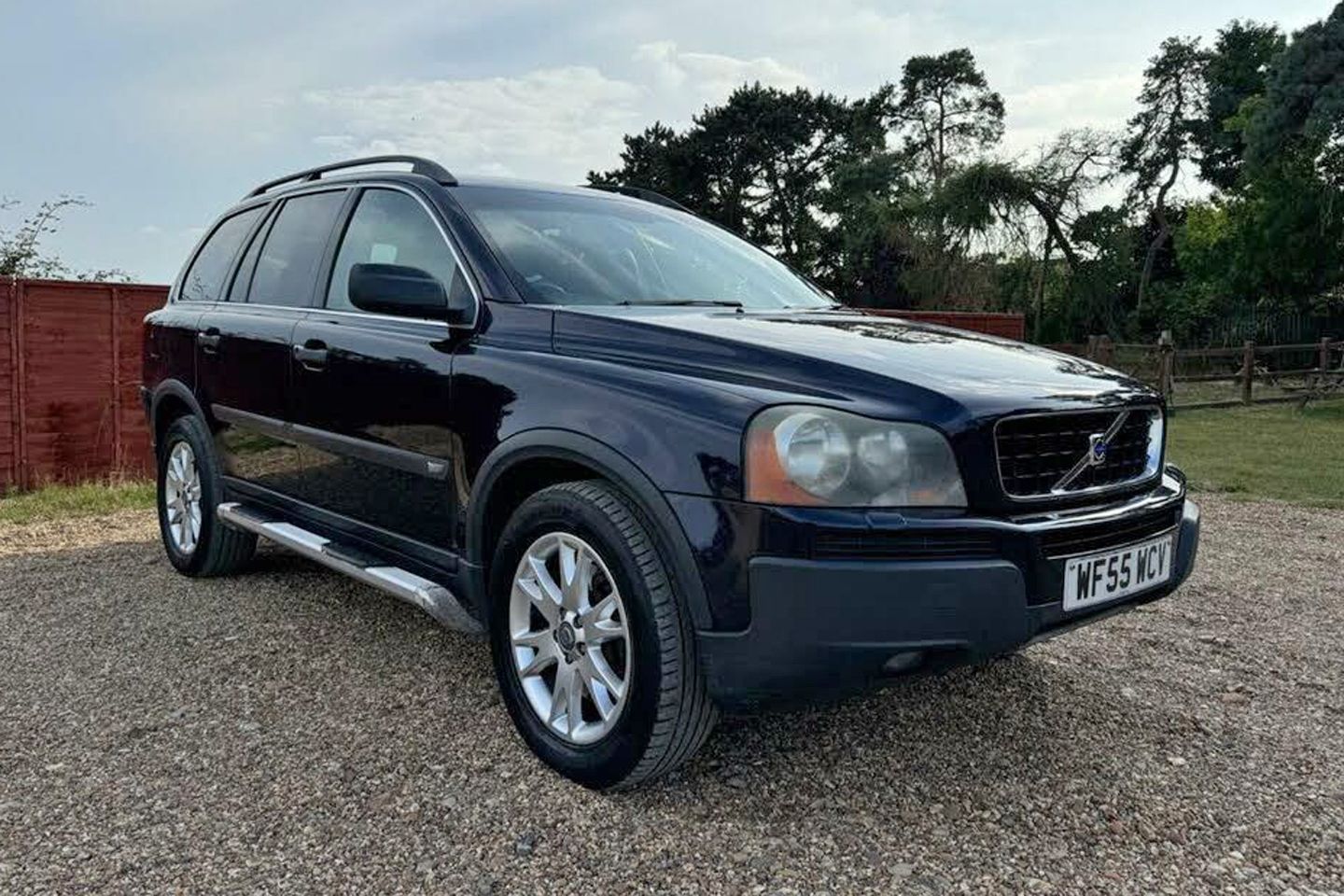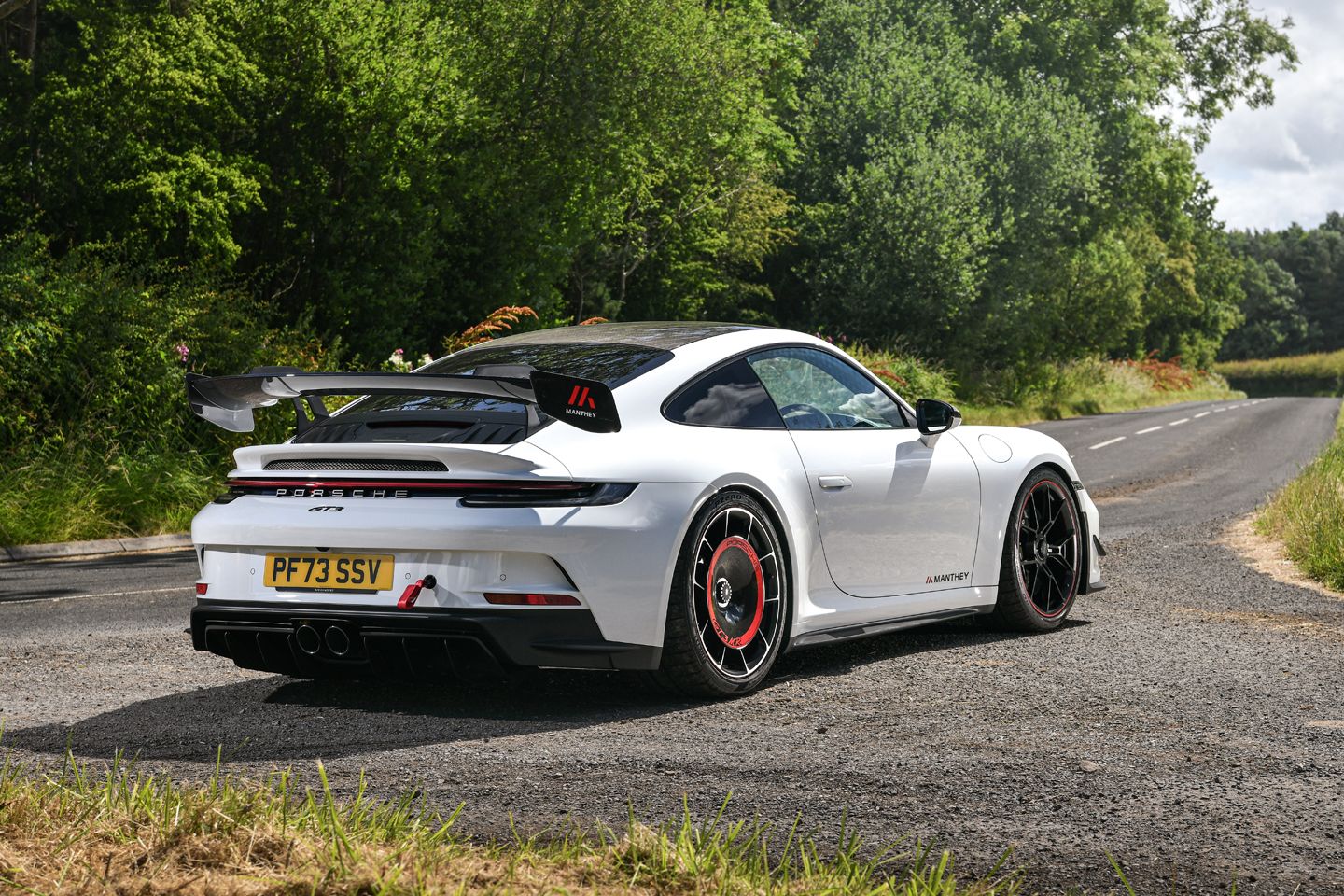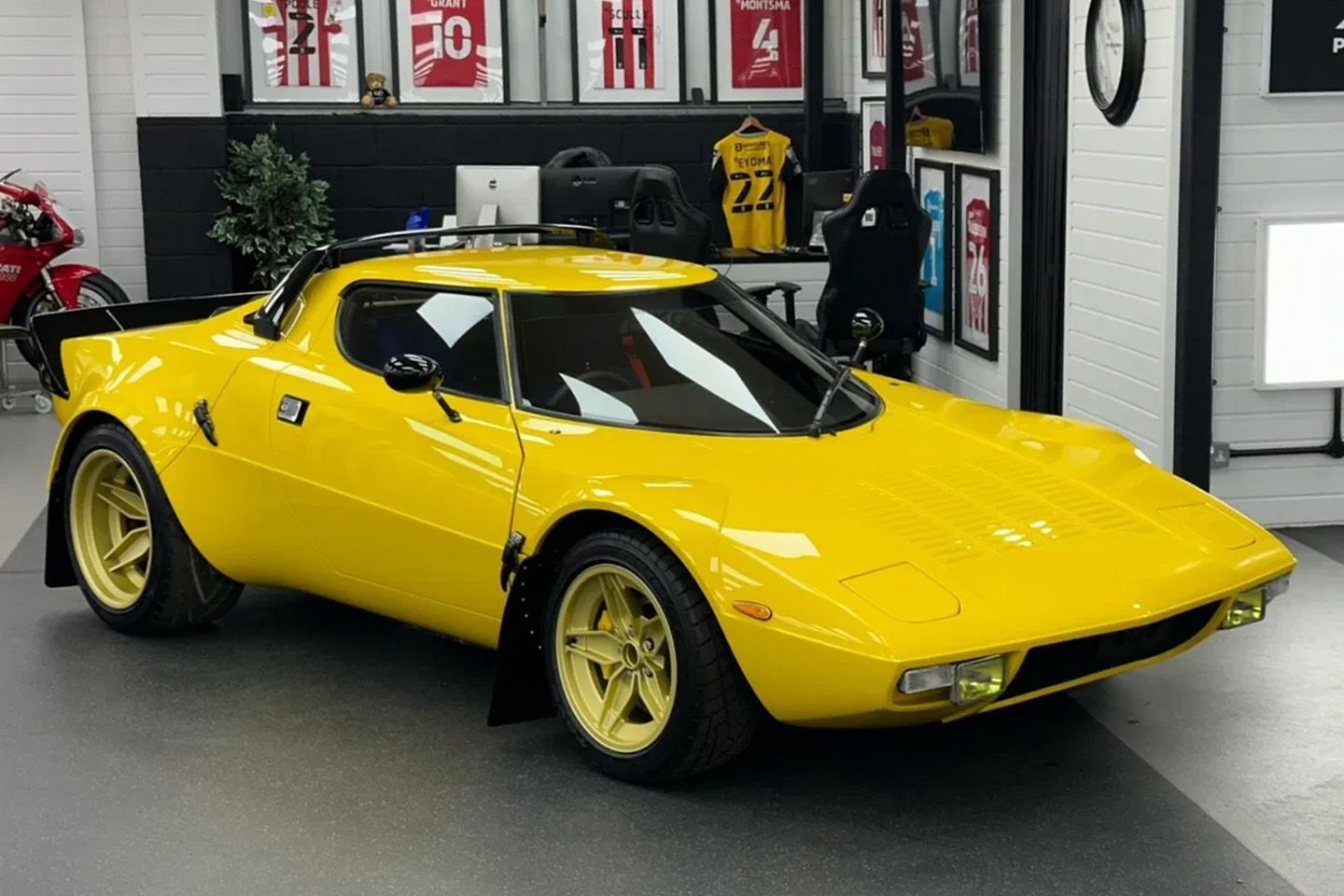
They say you never get a second chance at a first impression and, whether favourable or otherwise, there’ll be no forgetting the first time eyes meet Range Rover Sport SV. In black with matching 23-inch wheels (the test car was a different example to that in the pics), it’s moody to the point of glowering. And enormous. Of its many attributes, the old SVR would never be called timid or unassuming; in the grand scheme of things it isn’t, but against a sinister new 635hp top dog it may as well be a Freelander. If the fast SUV game is as much about oneupmanship and clout as outright ability, the SV is off to a hugely auspicious start.
There are looks that are equal parts envy and respect from those in SVRs, or X6 Ms, or the really silly AMGs. Which, regrettable though it (almost) is to admit, is quite a nice feeling, top of the SUV tree for a little while at least. But not as nice a feeling, it should be said, as actually being behind the wheel of an SV. It takes all of a quarter of a turn to be told in no uncertain terms that is a million miles from just a carbon bonnet and SV Bespoke Ebony Suedecloth headlining. It’s perhaps as extreme as a Range Rover has ever been.
Never have they rode like this; never have they steered like this; never has a Range Rover bristled with such unbridled intent, apparently exclusively focused on going searingly fast at any opportunity. As Nic alluded to in the first drive, the old SVR was a very agreeable sparring partner, all big-hearted supercharged silliness and devil-may-care dynamics; even on a run to the train station, the SV is an Olympic coach in comparison, slack-free, taut and alert. It says a lot, however, about the calibration of the myriad systems introduced for this car – the hydraulically interlinked dampers, pitch control, the all-wheel steering, the active rear diff – that it requires precious little acclimitisation. You’ll be taken aback by how gamely the big beast turns in, then realise that precisely the right amount of lock was applied the first time around. Despite the tech, this isn’t aloof or detached; the controls are all beautifully judged to make the most of the tech and make the driver feel slightly more at ease piloting such a colossal (and colossally fast) car. There aren’t many sports cars that wouldn’t be improved with a standard brake pedal like this.


As long as there are SVRs in this world (and Defender V8s, and XJRs, and Velar SVAutobiographies), the supercharged 5.0-litre will be missed. It is simply too charming a unit for it to not be that way. In its place, however, is a formidable eight-cylinder powerplant. Unsurprisingly, the BMW 4.4-litre, twin-turbo V8 does much the same to two and a lot of tonnes of Range Rover as it has to similarly heavy Beemers over the past few years: namely, hurl it at the horizon from no revs at all with the unrelenting force of a cannonball. The mild hybrid means it feels monstrously strong from idle, and look at that torque peak: identical to a 911 Turbo, across a 4,000rpm plateau to make Table Mountain look like a molehill. In collaboration with a smarter eight-speed auto, there’s never an occasion where an SV doesn’t feel demonstrably faster than before. Demonstrably faster than most things, to be honest. While also romping to the limiter as BMW M engines have a habit of doing. The sound isn’t as melodic or memorable, sure, because it never could be. The response and performance are very good distractions
It does mean the SV can’t quite compete on the easygoing charm like the old car, because it won’t burble at a bimble or lope along like a muscle car. It undoubtedly rides supremely well for a car on 23-inch wheels (just the regular rims, too, not the crazy carbon ones), somehow being plush and subdued while never abandoning the underlying tautness. You’ll try SV mode on the road, only to be as put off by the illuminated gear shift paddles as the brusqueness of the ride, and leave it again. One for the track day, perhaps. In Comfort or similar, it defies its billing as the lower, firmer flagship and feels damn near as agreeable as any other Sport. School run parents need not worry.
It’s when there are no responsibilities or requirements, however (or hopefully anyone else in a 10-mile radius) that the SV really demonstrates what it’s capable of. A-roads feel like B-roads and Bs feel like lanes, but there’s no denying this car moves the fast Range Rover game on leaps and bounds. It’s so agile and alert, a complete freak given its stature and kerbweight, seemingly never happier than when diving for an apex and using that rear differential to launch out the other side. Even on the standard all-season tyres (that had had some Silverstone time before us), there’s bite and precision that has eluded anything else similar from JLR. And still some scope for silliness if there’s the space of a county to spare, determined to prioritise the rear driven wheels over the front in extremis while ensuring precious little loss of momentum. The SV is a genuinely astonishing car to drive even moderately quickly. What it must be like fully kitted out with the carbon wheels and performance rubber boggles the mind. As purists it’s hard to love the idea of a Sport made even heavier with more technology, though the result is undeniable.


That the SV can do this, corner like it’s some rally-bred hot hatch and accelerate like an M5, while also retaining so many of the favourable characteristics that mark out the standard Sport, really elevates it to special status. Maybe we won’t all lust over £170k Range Rovers that you’d never take any further off-road than the beer festival car park, but as a demonstration of what can be achieved, it’s hard not to be hugely impressed. Indeed we have to hope that some of this genius makes it to cars that actually fit places and don’t cost almost as much as a Ferrari Roma. Bring on the Evoque SV.
For a truly flawless display, it might be said that the SV needed more than some fantastic seats and materials to mark out its interior. Such is the world of in-car tech now that Pivi Pro doesn’t feel as cutting edge as it might have just a few short years ago, and the dials lack a bit of pizzazz compared to the configurable items available elsewhere. And the combination of a flimsy gear selector in such a wide expanse of centre console still doesn’t strike the right chord – it’s never likely to. Having driven the SV at the same time as the Porsche Cayenne GTS, it’s clear there is still some room for improvement.
Let’s be clear, however – precisely none of that is to do with the way this Range Rover drives. Very good though it undoubtedly was, the old SVR was looked on favourably because it was supremely affable – you couldn’t help but like it, however hard you tried. This is a more buttoned-down Sport experience, albeit one where the ability has gone up several notches as well. Which, in its own juiced-up way, is also extremely likeable. And also quite some act for the new Defender OCTA to follow.
SPECIFICATION | 2024 RANGE ROVER SPORT SV EDITION ONE
Engine: 4,395cc twin-turbocharged V8
Transmission: 8-speed automatic, four-wheel drive
Power (hp): 635@6,000-7,000rpm
Torque (lb ft): 553@1,800-5,855rpm
0-62mph: 3.8 seconds
Top speed: 180mph
Weight: 2,485kg DIN
MPG: 24.1 – 22.7 (option dependent)
CO2: 267 – 282g/km (option dependent)
Price: £171,460 (price as standard; price as tested £172,995 comprising Sliding panoramic roof for £1,095 and Wi-Fi Enabled with data plan for £440)



